Drawing inspiration from Middle-Eastern stories such as Aladdin and adding an almost Steampunk-like element to them might sound like a crazy idea, but that is exactly what makes Airborne Kingdom an interesting and unusual prospect. A serene city-builder with a unique visual style and an engaging unusual overall story, what starts as an interesting novelty soon grows into a compelling addiction.
Upon booting Airborne Kingdom the player is treated to a glorious, hand drawn animation that speaks of a prophecy — one in which a floating city would bring peace to the lands. This, in itself, is fairly unique, and the player will soon be tasked with meeting the requirements of various cities both large and small in order to bring them closer to unity. These requirements might manifest as fetch quests in practice, but draping them in an elaborate, gold-leaf storyline really helps get the player bought in.
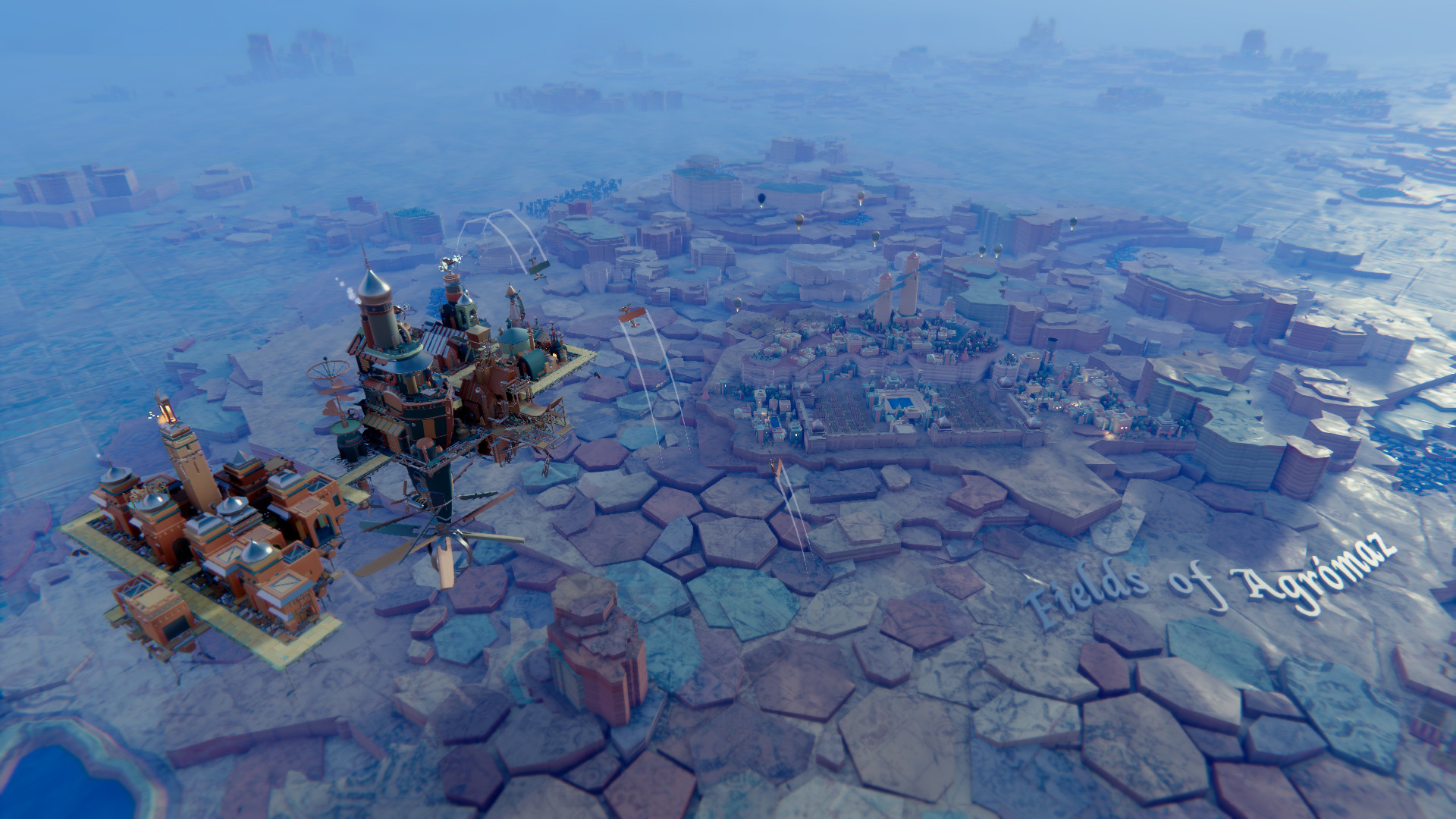
Once in the game itself, players are met with beautiful, stylised visuals which include aspects of both the very ornate, Middle-Eastern style that I spoke of earlier, along with a chunky, pixel art aesthetic. The more elaborate style is used mainly on the HUD and menu screens, as well as when representing the airborne city itself — which is made up of gilt-edged metal work and ornate domes.
The map, which spans out below the player as far as the eye can see, is more simplistic — favouring clarity and draw distance over detail. Trees are shown as little green lollipops on top of brown stalks, whilst mountains build up in layers almost like a cake, rather than organically as they do in reality. The effect is in keeping with the idea that this is the age of exploration, and the map is more stylised than functional in the modern sense, but for the purpose of finding resources, it is perfect in game.
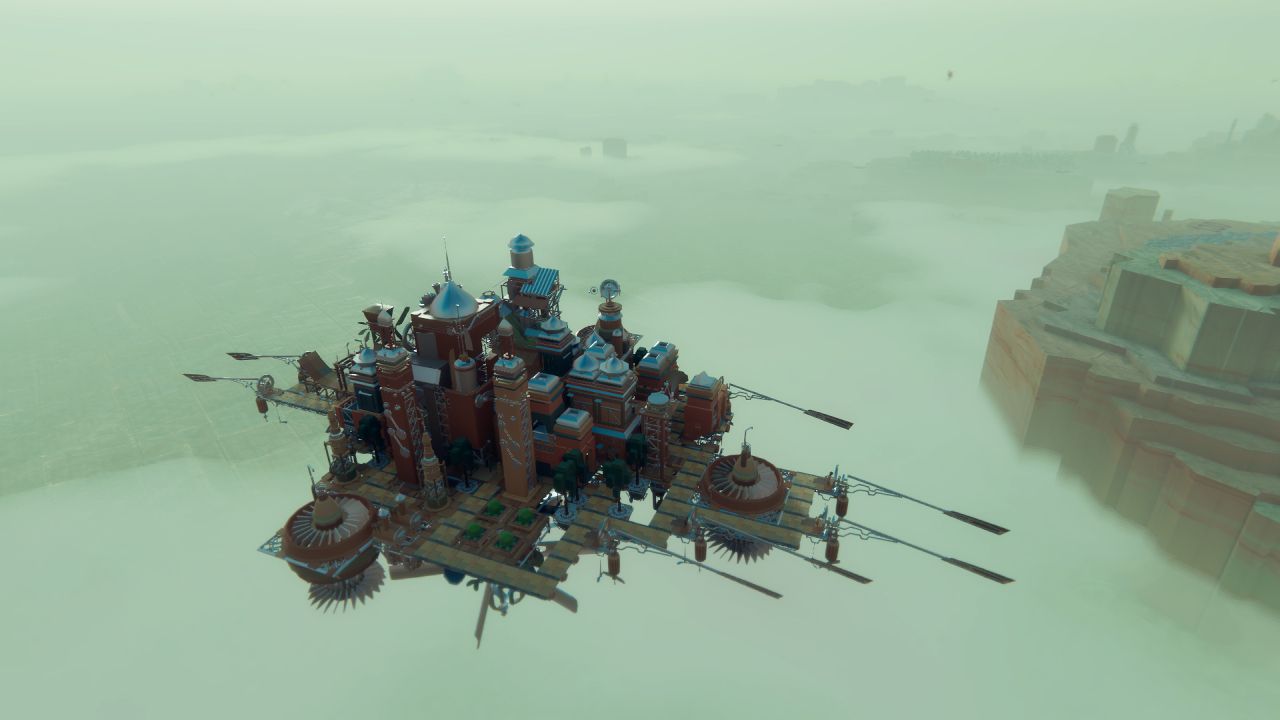
And finding resources is something you’ll need to do — a lot. Airborne Kingdom allows players to pilot their ponderous floating city more or less anywhere, but in order to keep it in the air you’ll need coal (for power), food and water (for your people) and frequently other resources (such as wood or metal) to continue advancing and expanding.
The technology tree is large and filled with interesting options. Do you want to prioritise storage? What about the range at which you can collect resources? Maybe the efficiency of your flight? There are many options, most of which result in new buildings or upgrades that make your city more efficient and ultimately larger, and this comes with its own challenges.
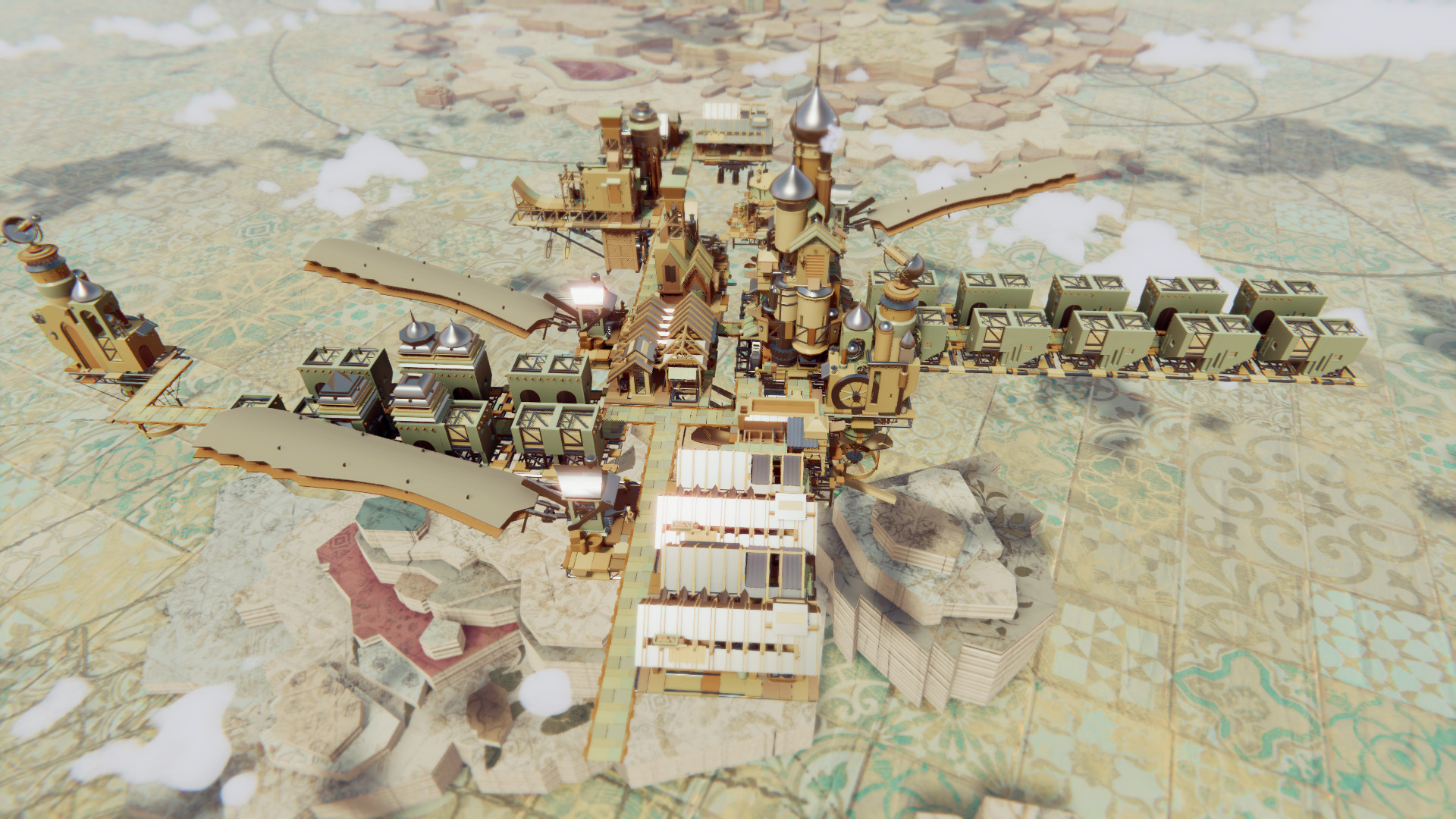
If Airborne Kingdom played like any other city builder, there wouldn’t be much else to report about it besides the fact that it is pleasant to look at and an interesting diversion. Where the challenge lies is in the concepts of tilt and lift. Tilt is what happens when your kingdom has too much weight on one side — which ultimately causes distress to your citizens. Lift is literally what keeps you in the air, so again if total weight is greater than lift (or if you run out of fuel) your city will plummet.
Tilt is perhaps the most fun mechanic of the game when it comes to city planning, because Airborne Kingdom still demands some of the same focus as any other city builder. It might be heavy at one end of the city, but that does not mean that the citizens at the other end will tolerate having a glass smelter next to them.
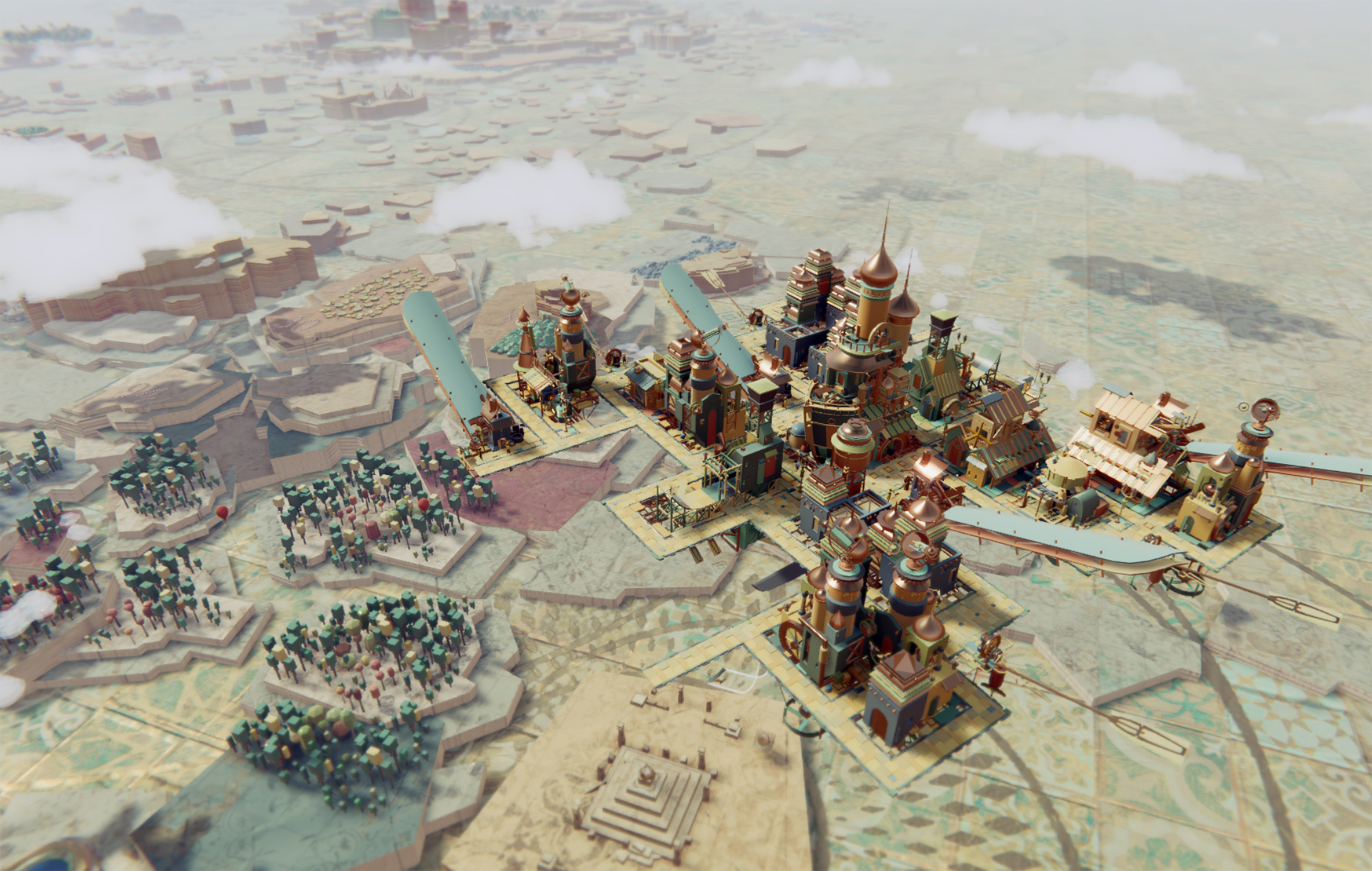
Balancing conflicting demands becomes extra interesting here as a result of these new and different mechanics, and I enjoyed how Airborne Kingdom offers the players a few helping hands. For example, once a building is placed, it can be moved again for free — a real benefit when you might simply drop something in the wrong place by mistake. I know this may be a problem for some purists, but for a casual player (and this is a casual game) it’s a welcome alternative to feeling like you need to reload a save just because of an error.
Over the course of the game, your kingdom will grow ever larger until the point at which it will have several pairs of wings, perhaps some thrusters and stabilisers, and hundreds of people living there. You’ll pilot your magnificent home around various royal cities unlocking quests and resolving disputes in the most elegant way — and it’s never stressful unless you expand much too quickly and end up with a severe imbalance.
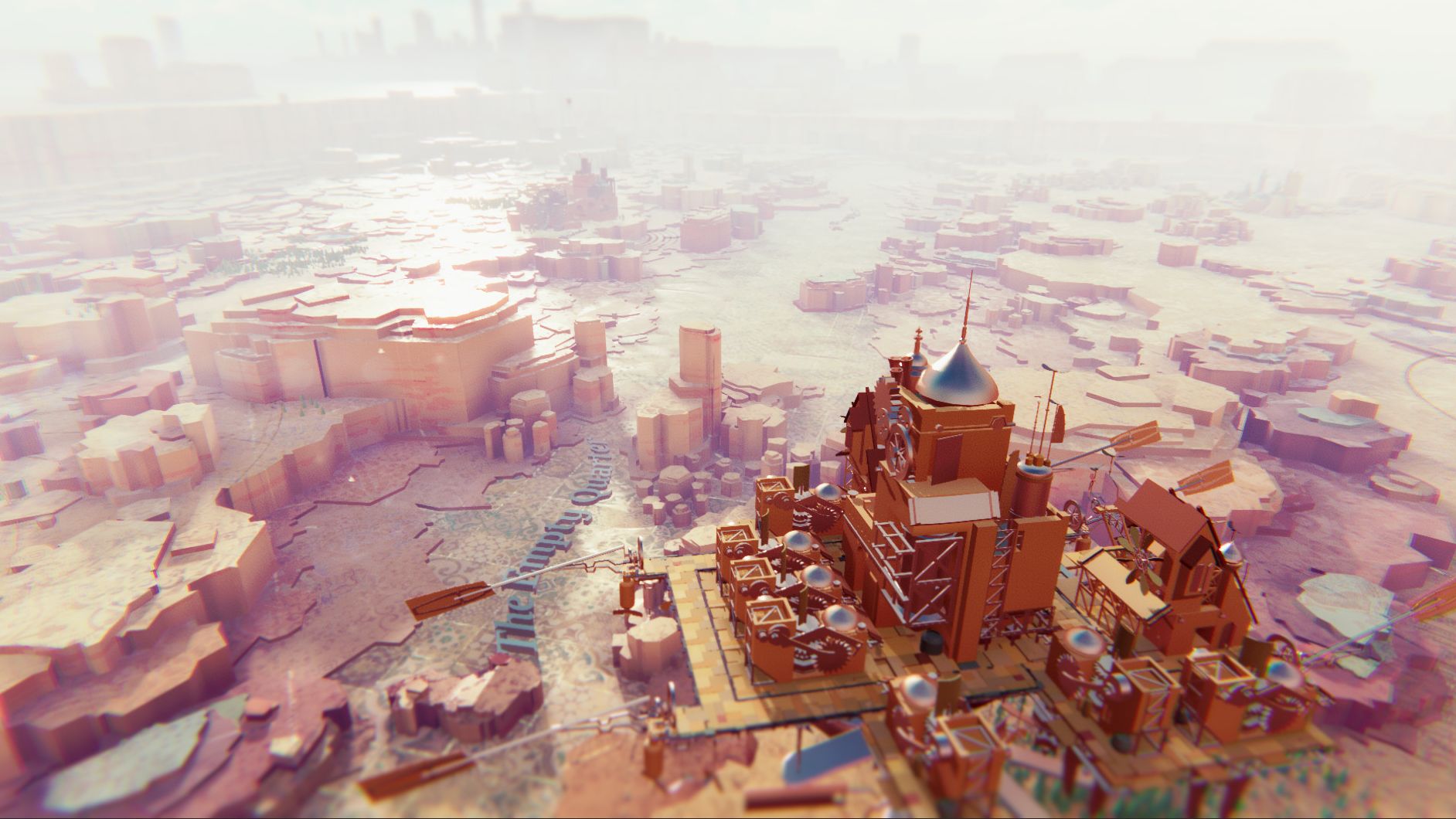
Despite that relatively low level of difficulty, I never got bored when playing Airborne Kingdom, and I’d happily experience it again in another setting or storyline. Arguably it’s a shame that replay value is limited and that there is just one campaign, but given the price point, I’d be surprised if anyone is complaining once they reach the end.
Airborne Kingdom is available on Xbox One, Nintendo Switch, Playstation and PC.